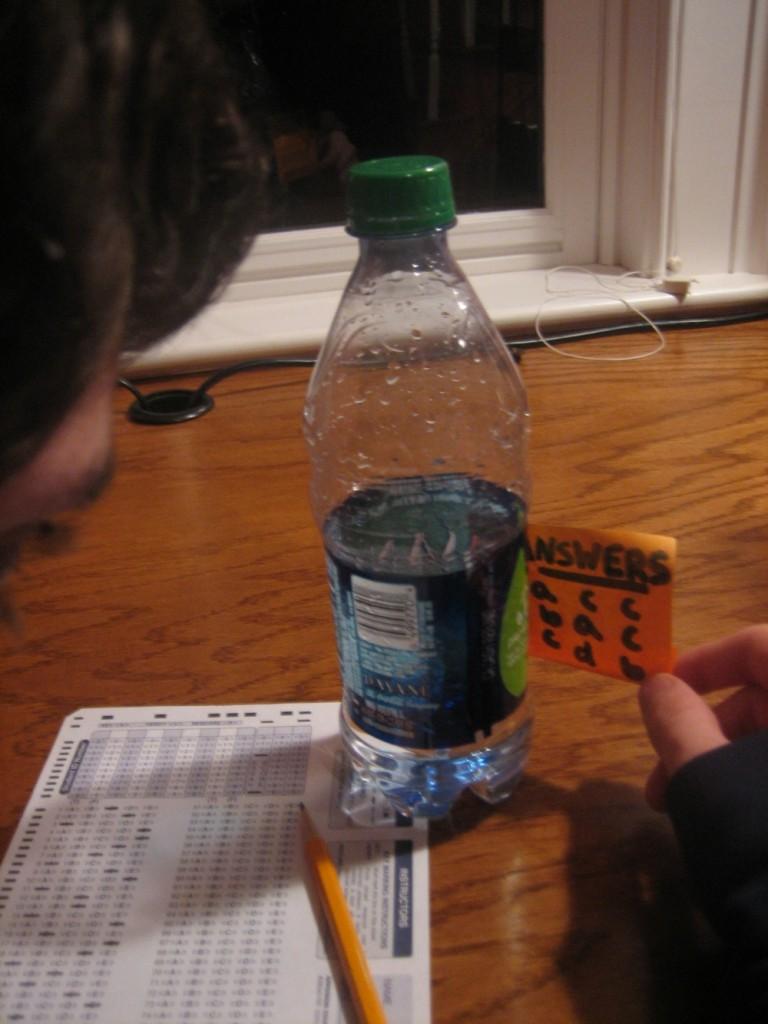On a few fateful mornings throughout the year, high schoolers nationwide pile into their SAT testing rooms with nerves skyrocketing, hair half brushed, and freshly sharpened No. 2 pencils. But 19-year-old Sam Eshaghoff, of Great Neck North High School in Long Island, N.Y., walked into his room with a different set of pressures than most: not getting caught.
Eshaghoff charged between $1500-$2500 to take the SAT under fraudulent identification. Six students from Great Neck North High School paid for his scores that ranged from 2170 to 2220.
Imagine a room full of high school students slaving away at the nation’s most predominant standardized test.
Now imagine the one college student, breezing through the exam, who would later be charged with “Scheme to Defraud” in the first degree and six counts of “Criminal Impersonation” in the second degree. Had it not been for the identical handwriting on six different essays, Eshaghoff’s attempts would have been successful.
But how many cases have slipped through the cracks? No one will ever know.
Cheating the System
Out of 2.25 million students that take the SAT each year, 1000 scores get cancelled, according to Tom Ewing, spokesman for the test security division of College Board and Educational Testing Service (ETS).
Throughout the 7000 test centers within 170 countries, only .0004 percent of test takers get caught cheating. This verifies the efficacy of the security precautions implemented by ETS, an assessment development and research organization. According to Ewing, it all starts with the printing of the SATs.
The tests are printed in select, secure locations. From the printers, the booklets and test sheets are shrink-wrapped and shipped in tamper-proof boxes to the highly guarded ETS facilities in Princeton, NJ.
Here, all test booklets are coded and numbered, and are sent to schools along with seating charts for all registered students. Once they arrive in schools, they are kept in locked storage closets. On test day, they are passed out in order, collected in order, and coded. Test sheets are shipped back to ETS headquarters overnight through commercial shipping companies.
Despite these measure, there are students who get away with cheating. “99.99 percent of test security cases are copying,” Ewing said.
“A boy literally cheated off of me the entire ACT, he didn’t even look at his own questions, he just waited for all my answers,” said a Staples senior who was granted anonymity due to the nature of the incident. “He knew I’d done well in the past and he figured that since we were friends, I wouldn’t do anything about it—and I didn’t do anything about it.”
Alan Jolley, Staples’ official supervisor for SAT administration, follows all ETS requirements, which include making seating charts and reporting any egregious misconduct. Jolley also collects cell phones prior to testing.
However, Jolley recalls that one student refused to hand in his cell phone. “He conducted the whole test, and just a few minutes before it was over, the phone went off and he lost his score,” Jolley said.
Another incident occurred about eight years ago, when the ETS flagged a group of test scores as suspicious, and requested seating charts. The cheating wasn’t definitive, but ETS deemed it necessary for the students to be retested.
The Mentality Behind Cheating
In an affluent town with a high school ranked among the best in the country and the median family income of $191,308 per year, Westport is a bastion of ceaseless stress and pressure.
In 2003, a Staples student was caught cheating with an answer key glue to the inside of his water bottle. Students will do anything to keep up:
“Expectations are set here, externally and internally,” said former Staples student Aaron Eisman in an interview with the New York Times. “In Westport, getting a B is like getting an F. So if you don’t feel you can achieve it on your own, you find another way.”
The pressures that existed in 2003 still translate into cheating for some students today. According to Guidance Counselor Micah Lawrence, this inclination to cheat can stem from a myriad of reasons: stress, pressure from parents, or either poor preparation or time management.
Other students don’t see the value in taking a test that degrades individualism amongst students. “It’s ridiculous that they tell us to be unique, to be individuals, then they give us a standardized test that makes us all one faceless herd,” the same character from the movie said.
Academic Integrity
Most students are not comfortable with students cheating, especially on standardized tests, as it is not fair to the students who do not rely on others for academic success.
“There’s a temptation for everything,” Danlei Wang ’14 said, “but [cheating] really isn’t right because people always say ‘when you cheat, you’re only hurting yourself. If you don’t know it, you don’t know it—it’s not going to suddenly make you smarter.”
Following the 2003 incident, former principal John J. Brady started a campaign at Staples to prevent cheating.
The New York Times reported that students were relieved and “eager to help him stamp out behavior that they said was driven by a frenzied competition to get into an Ivy League school.”
According to Lawrence, most students have internal values that they “place on their work being original and their own.”
Still, a 2011 study by the Governor’s Prevention Initiative for Youth found that 28 percent of freshman, 48 percent of sophomores and 50 percent of juniors at Staples have admitted to cheating within the past year—it seems implausible for this cheating epidemic to be put to bed.
“It pisses me off that now [the cheater] can apply to a lot of the schools I am because he got the scores I did when he’d never be able to otherwise. To this day I still get angry whenever I think about it,” the anonymous student said.













































